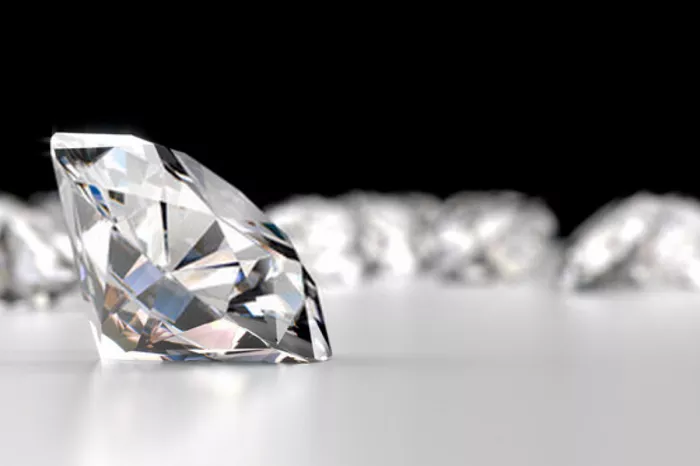Gemstones have long held a special place in human history, revered for their beauty, rarity, and symbolic significance. Throughout the Bible, various gemstones are mentioned, each carrying its own significance and symbolism. Among these precious stones, one stands out as particularly significant and revered. In this article, we delve into the world of biblical gemstones to unveil the most precious stone as depicted in the sacred scriptures.
Introduction to Biblical Gemstones
Gemstones are mentioned throughout the Bible, primarily in the Old Testament, where they are often associated with the breastplate worn by the High Priest of Israel. This breastplate, known as the “Breastplate of Judgment” or the “Breastplate of Aaron,” was adorned with twelve gemstones, each representing one of the twelve tribes of Israel.
The gemstones mentioned in the Bible hold both literal and symbolic significance, with each stone representing different virtues, attributes, or aspects of divine truth. Over time, interpretations of these gemstones have varied among scholars and theologians, leading to a rich tapestry of symbolic meanings associated with each stone.
The Twelve Stones of the Breastplate
In the Book of Exodus (Exodus 28:15-21) and later elaborated upon in the Book of Exodus (Exodus 39:8-14), detailed descriptions of the breastplate and its adornments are provided. The breastplate was made of gold, blue, purple, and scarlet thread, and fine twined linen, with each of the twelve gemstones set in four rows upon it.
The twelve gemstones on the breastplate are traditionally believed to be:
Sardius (or Ruby)
Topaz
Carbuncle (or Emerald)
Sapphire
Diamond
Jacinth (or Ligure)
Agate
Beryl
Onyx
Jasper
These gemstones, arranged in four rows of three, were inscribed with the names of the twelve tribes of Israel, serving as a symbolic representation of the unity and harmony of God’s chosen people.
Interpreting the Gemstones
The interpretation of the gemstones on the breastplate has been the subject of much debate and speculation over the centuries. While the names of the gemstones are mentioned in the Bible, their exact identities and meanings have been the subject of interpretation and conjecture.
One of the challenges in interpreting the gemstones lies in the translation of the original Hebrew terms into modern languages. Ancient gemstones were often known by different names in various cultures, and their exact identities can be difficult to ascertain with certainty.
For example, the first stone on the breastplate, traditionally translated as “sardius,” is believed by some scholars to refer to a red gemstone, possibly a ruby or a carnelian. Similarly, the stone translated as “carbuncle” is thought to refer to a bright, glowing gemstone, possibly an emerald or a garnet.
Despite these challenges, scholars and theologians have offered various interpretations of the gemstones based on their color, properties, and symbolic significance. Some interpretations draw on ancient traditions and beliefs surrounding gemstones, while others rely on linguistic analysis and historical context to decipher their meanings.
The Most Precious Stone
Among the twelve gemstones on the breastplate, one stone stands out as particularly significant and revered: the diamond. In many interpretations of the breastplate, the diamond is associated with the tribe of Judah, the tribe from which King David and Jesus Christ were descended.
The diamond, with its unparalleled brilliance, hardness, and durability, has long been regarded as the king of gemstones, symbolizing strength, purity, and divine light. Its association with the tribe of Judah, considered the royal tribe of Israel, further enhances its symbolic significance as a symbol of kingship and sovereignty.
In Jewish mysticism and Kabbalistic tradition, the diamond is associated with the sefirah of Malkhut, representing the divine attribute of kingship and the physical world. It is seen as a symbol of the divine presence manifesting within the material realm, illuminating the darkness and guiding humanity towards spiritual enlightenment.
Symbolism of the Diamond
The symbolism of the diamond in the Bible is rich and multifaceted, reflecting its many attributes and associations. Here are some of the key symbolic meanings attributed to the diamond:
Purity: The diamond’s clarity and transparency symbolize purity of heart and mind, representing the ideal of moral and spiritual perfection.
Strength: The diamond’s hardness and durability symbolize strength and resilience, serving as a reminder of the steadfastness of faith and the enduring nature of divine truth.
Light: The diamond’s brilliance and sparkle symbolize divine light and enlightenment, illuminating the path of righteousness and dispelling the darkness of ignorance and doubt.
Royalty: The diamond’s association with the tribe of Judah and the lineage of kingship symbolizes royal authority and sovereignty, reflecting the divine rulership of God over His creation.
Eternity: The diamond’s timeless beauty and indestructible nature symbolize eternity and immortality, reminding believers of the eternal nature of God’s love and the promise of everlasting life.
Conclusion
In the rich tapestry of biblical symbolism, the diamond stands out as a shining beacon of light and truth, embodying the virtues of purity, strength, and divine royalty. Its association with the tribe of Judah and the lineage of kingship further enhances its significance as a symbol of spiritual sovereignty and divine presence.
As we reflect on the symbolism of the diamond in the Bible, may we be inspired to emulate its qualities of purity, strength, and enlightenment in our own lives, as we strive to walk in the light of God’s truth and righteousness.


